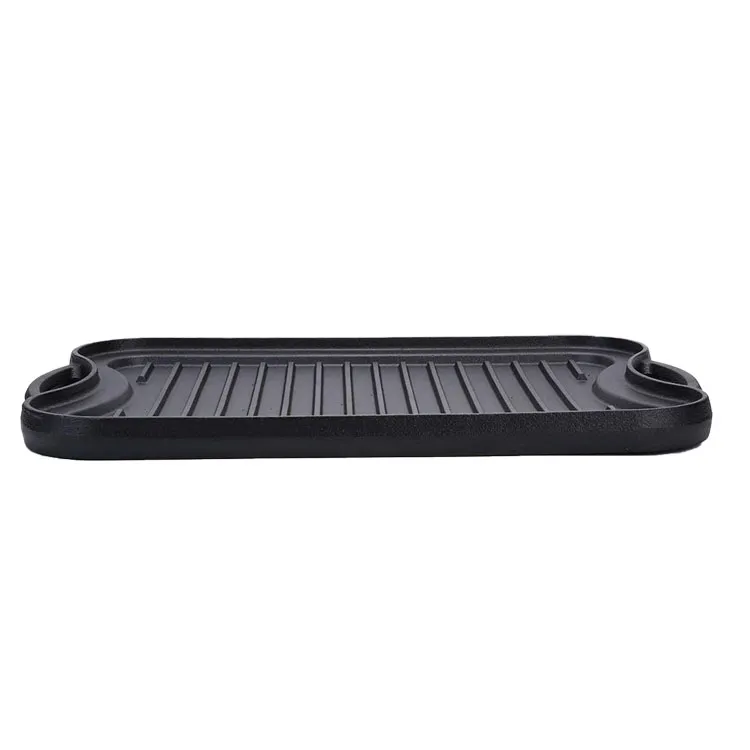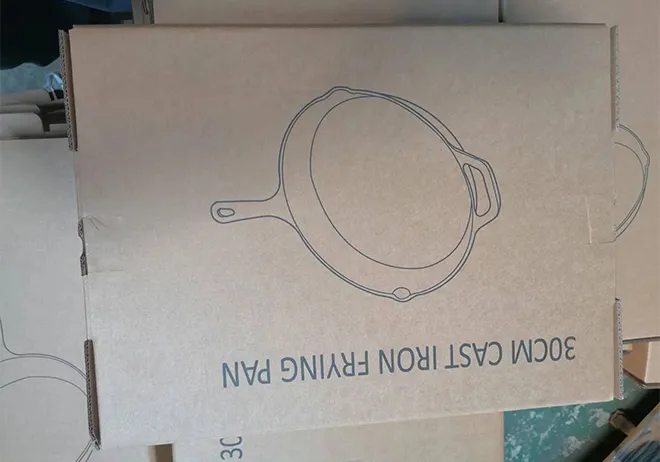
Feb . 11, 2025 12:52
Back to list
how to choose dutch oven size
Selecting the perfect Dutch oven size is crucial for both novice and seasoned cooks looking to enhance their culinary experiences. Dutch ovens are versatile, durable, and can significantly improve your cooking results, but choosing the right size is key to maximizing their potential. Here's a comprehensive guide to help you make the best decision when it comes to picking the ideal Dutch oven size.
Professional chefs or cooking enthusiasts may consider even larger Dutch ovens, such as those exceeding 10 quarts. These are particularly useful in restaurant settings or for serious home chefs experimenting with ambitious culinary projects. They offer the flexibility to prepare vast quantities of food without multiple batches, saving time and energy. Beyond size, it is important to consider the weight of the Dutch oven, as larger models can be quite heavy, especially when filled with food. Additionally, ensure it fits comfortably in your oven and on your stovetop, as well as accommodate your storage space. When it comes to materials, most Dutch ovens are made from cast iron or enameled cast iron. Traditional cast iron ovens are excellent for heat retention and are often used for baking and slow cooking. Enameled cast iron, while slightly more expensive, doesn’t require seasoning and is easier to clean. However, both materials provide exceptional heat distribution and longevity, ensuring that your investment will last for many years. It’s worth noting that many top-tier culinary brands, like Le Creuset, Lodge, and Staub, offer a range of Dutch oven sizes, along with detailed guidelines and tips for best use. Exploring customer reviews and expert recommendations can also provide valuable insights into how different sizes perform for various cooking needs. In conclusion, selecting the appropriate Dutch oven size involves considering the number of people you usually cook for, the types of meals you want to prepare, and practical factors like weight and storage. By carefully considering these aspects, you can choose a Dutch oven that not only meets your culinary demands but also enhances your kitchen's functionality. This thoughtful approach ensures you make the most out of your Dutch oven, crafting delicious meals with ease and precision.


Professional chefs or cooking enthusiasts may consider even larger Dutch ovens, such as those exceeding 10 quarts. These are particularly useful in restaurant settings or for serious home chefs experimenting with ambitious culinary projects. They offer the flexibility to prepare vast quantities of food without multiple batches, saving time and energy. Beyond size, it is important to consider the weight of the Dutch oven, as larger models can be quite heavy, especially when filled with food. Additionally, ensure it fits comfortably in your oven and on your stovetop, as well as accommodate your storage space. When it comes to materials, most Dutch ovens are made from cast iron or enameled cast iron. Traditional cast iron ovens are excellent for heat retention and are often used for baking and slow cooking. Enameled cast iron, while slightly more expensive, doesn’t require seasoning and is easier to clean. However, both materials provide exceptional heat distribution and longevity, ensuring that your investment will last for many years. It’s worth noting that many top-tier culinary brands, like Le Creuset, Lodge, and Staub, offer a range of Dutch oven sizes, along with detailed guidelines and tips for best use. Exploring customer reviews and expert recommendations can also provide valuable insights into how different sizes perform for various cooking needs. In conclusion, selecting the appropriate Dutch oven size involves considering the number of people you usually cook for, the types of meals you want to prepare, and practical factors like weight and storage. By carefully considering these aspects, you can choose a Dutch oven that not only meets your culinary demands but also enhances your kitchen's functionality. This thoughtful approach ensures you make the most out of your Dutch oven, crafting delicious meals with ease and precision.
Previous:
Latest news
-
Season Cast Iron Perfectly with GPT-4 Turbo TipsNewsAug.01,2025
-
High Quality Cast Iron Cookware - Baixiang County Zhongda MachineryNewsAug.01,2025
-
Premium Cast Iron Pan: Durable & Perfect HeatNewsAug.01,2025
-
High Quality Kitchen Durable Black Round Cast Iron Cookware Pancake Crepe Pan-Baixiang County Zhongda Machinery Manufacturing Co., Ltd.NewsAug.01,2025
-
Cast Iron Cookware - Baixiang County Zhongda Machinery | Nonstick, Heat ResistanceNewsAug.01,2025
-
High Quality Kitchen Durable Black Round Cast Iron Cookware - Baixiang County Zhongda Machinery | Non-Stick, Heat Retention, DurableNewsJul.31,2025


